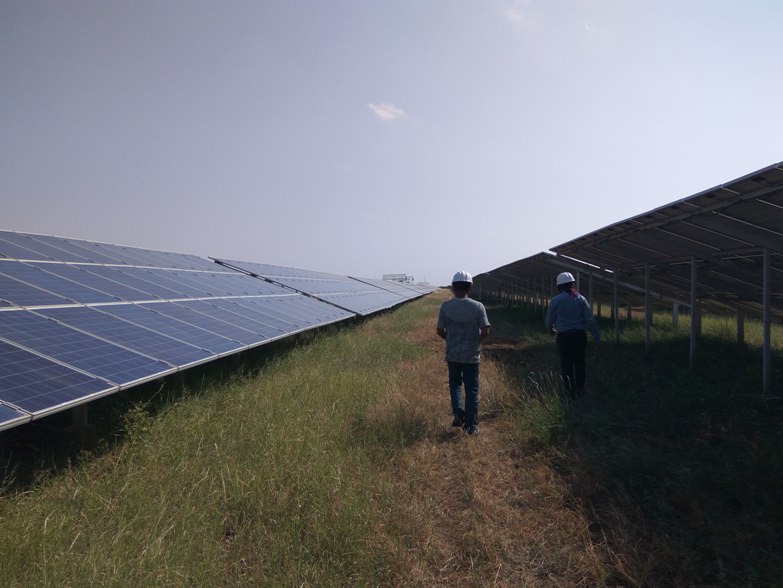
DNV GL is a global quality assurance and risk management company that has a longstanding presence in India, across the energy value chain. In this editorial engagement, we have Alok Kumar taking us through DNV GL’s services in the field of renewable energy—mainly solar and wind—as also energy storage. He observes that since renewable energy in India has become a priority like never before, DNV GL’s role becomes increasingly important. An interaction by Venugopal Pillai.
Can we start by understanding the broad scope of activities of DNV GL in India, in the field of renewable energy?
DNV GL delivers world-renowned testing and advisory services to the energy value chain including renewables and energy efficiency. Our expertise spans across onshore and offshore wind power, solar, conventional generation, energy storage, transmission and distribution, smart grids, and sustainable energy use, as well as energy markets and regulations.
DNV GL has a wealth of experience working in the Indian wind energy market, dating back to 1996; providing a wide range of technical services and advice to developers and investors alike from the early stages of site finding and feasibility. DNV GL has completed 30 Wind Mapping exercises across India to date; including the production of a full mesoscale wind map of India, right through to full technical due diligence and owners engineer assignments. DNV GL has also designed and optimised the micro-siting of over 1,500 wind turbines, and has analysed more than 50,000 mw of potential assignments in India. Our state-of-the art robust forecasting service combined with weather forecast information from many of the world’s foremost meteorological organizations provide highly accurate forecasts in India.
In preparation for the future energy transition, we have heavily invested time and resources in high voltage/high power testing, digital solutions, big data analytics, asset management tools, and the further use of artificial intelligence applications for the wind and solar industries.
Tell us about your patented design software popular in India’s wind energy sector.
DNV GL’s industry standard wind turbine design software “Bladed” is widely used by turbine manufacturers and R&D institutions globally. Also, many Indian wind turbines are certified and type-tested by DNV GL and our Guideline for the Certification of Wind Turbines is recognized by NIWE. DNV GL’s industry standard WindFarmer:Analyst software is used by many wind farm developers. Following a recent requirement by Government in India, we have conducted Low Voltage Ride Through (LVRT) tests for wind turbines using our own specialized container. And, also we are the technical partner for the first largest offshore wind project in India–FOWIND, which is largely funded by the European Union.
Solar energy is gaining much traction in India in recent years. What are your activities specific to the solar PV industry?
Yes, in addition to our wind capabilities, DNV GL has been active in the Indian solar market since 2012. Also, through smart grid projects, system coordination and control for grid, SCADA systems, and a comprehensive capacity building program for government we are supporting the renewable integration efforts in India.
PV Evolution Labs (PVEL), a part of DNV GL, has state of the art laboratory and outdoor testing facilities to evaluate solar panels and other solar system components. DNV GL manages a Product Qualification Program and batch testing for both PV modules and inverters. Qualification includes extensive PV module and inverter testing that extends far beyond the minimal IEC certification standards. Participation in the program is typically funded by manufacturers. Downstream partners (banks, developers, IPPs, EPCs) can obtain access to the reports and data at no cost. There are presently over more than 100 downstream partners enrolled in this program.
Similarly, GreenPowerMonitor, also a part of DNV GL, is the only company that covers the entire value chain in the field of monitoring and managing renewable power plants with their specialized services. It provides all the tools for optimising the performance of solar and wind power plants.
One report by DNV GL very aptly observes that policymakers and system operators have divergent priorities, and therefore different requirements. Please discuss this in the context of the Indian renewable energy market.
While policymakers in India are very clear in the effort to achieve the national targets set to address climate change under the Paris agreement, system operators are grappling more with the day-to-day challenges that include technical issues posed by renewables, inadequate grid infrastructure and poor financial health. These challenges have resulted into payment delay and unreasonable demand of rebate in dues, reservations in honoring the power purchase agreement (PPA) and letter of intent (LoI) in the light of lower tariff achieved through reverse auctions and frequent backing down of renewable generations.
Electricity is in the concurrent list in the Indian Constitution which means that both the central and state governments have jurisdiction. It is pertinent that importance of commitment given by central government under the Paris agreement are equally appreciated and supported by state governments. Policy makers should consider the short- and long-term challenges while devising the policy, it is also important that system operators are sensitised and suitably trained, through a comprehensive capacity building program for better appreciation of importance of renewables, and to equip them to overcome the challenges that renewables pose.
Integration of intermittent sources of energy like solar and wind into the grid has its own complexities. How important is this aspect in DNV GL’s scope of activities?
Yes, intermittent sources of energy pose some challenges but fortunately these can be largely tackled technically. Countries like Spain and Germany have ensured that more than 30 per cent of the total energy mix is coming from renewables, while the same is less than 7 per cent for India, albeit with a few states like Tamil Nadu managing to achieve around 17 per cent.
As mentioned before, our state-of-the-art short term forecasting tool and services for both wind and solar provide day-ahead accurate forecasts for the better planning of renewable resources. DNV GL is also accredited and recognized to conduct Low Voltage Ride Through (LVRT) tests and certify the capability in a wind turbine which is necessary to ensure that wind farms remain connected to the grid during short dropouts; major blackouts are subsequently avoided.
To ensure the smooth integration of renewables, the dominant trend is towards the larger grid network and connectivity. For example, The European Union has targets for 10 per cent interconnection capacity by 2020, rising to 15 per cent by 2030.
Similarly, there is a plan for a multi-national power transmission project in Asia. For such large distance transmission, super grids are required that enable resources to be shared in a spatial and temporal diversification due to different time zones and seasonal differences. The idea behind our KEMA High Power Laboratory is to allow the industry to test and certify the components needed to build such super grids. Our High Power Lab is now the first facility in the world capable of testing the emerging class of ultra-high voltage (UHV) grid components. It can test power transformers up to 800kV and switchgear up to 1,200kV.
Finally, DNV GL was also involved in a comprehensive capacity building program of more than 60 Indian government officials for renewable integration.
Alongside renewables, energy storage is also gaining prominence. Please tell us about DNV GL’s work in this area in India.
Our GRIDSTOR Recommended Practice document (DNVGL-RP-0043) is a one-stop guideline for safe and sustainable grid-connected energy storage. The GRIDSTOR Recommended Practice (RP) offers a blueprint for an independent quality guarantee of the safe implementation and operation of energy storage. GRIDSTOR, the result of a Joint Industry Project brings together the most important and relevant standards, guidelines and industry experience into a single document.
India has targeted to attain 175 GW of renewable energy capacity by 2022, out of which 100 GW is expected to come from solar alone. How do you see the years ahead for DNV GL in India’s renewable energy sector? What will be you key growth drivers?
Renewable energy in India is a priority like never before, and DNV GL, the world’s largest renewable energy consulting firm, will certainly play its expected role. It is important that such a remarkable growth in renewables is achieved through the right quality and reliability and this is where DNV GL’s role becomes more important than before. Committed to provide more accurate and reliable energy assessments, high quality technical services and innovation, DNV GL continues to bring to the Indian market its world class expertise and experience of working across more than 200 offices globally.
It is very important that such large scale renewable assets are not only built but are correctly managed and operated efficiently. In the near future, the DNV GL global operations and control room will be available in India, providing state of the art methodologies and technology for the most efficient asset management.
In addition to our ability to couple modeling and technology assessments with hands-on testing and engineering support, independent research activities are conducted to help establish safety protocols, recommended practices, and develop unique tools to support specific applications. DNV GL dedicates 5 per cent of its revenues to research and innovation, with our Research & Innovation team focusing on key aspects of the evolving storage industry and solar application considerations. The newly established ‘Technology & Innovation’ team in India will ensure that efforts in innovation are directed to solve the local technical challenges.

